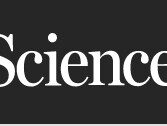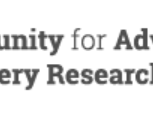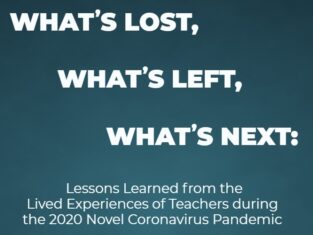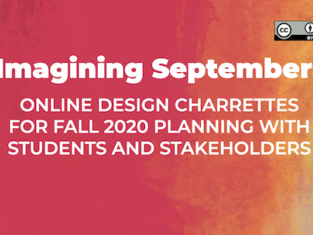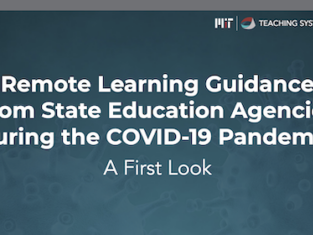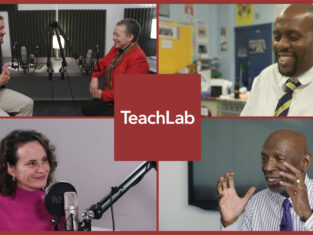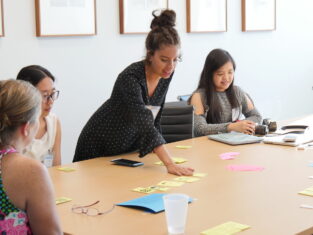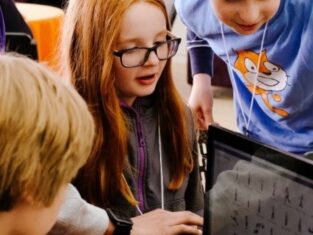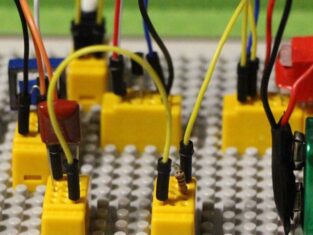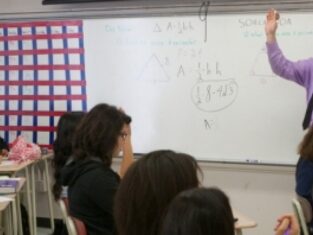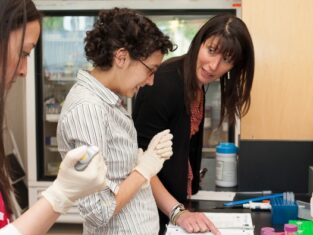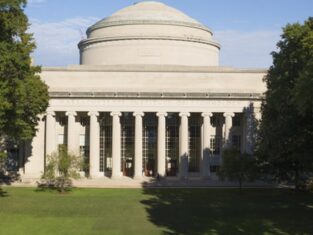
Soft Money and Hard Lessons: Investing in Math Teacher Learning in Poverty-Impacted Schools Requires, Well, an Investment
In this first of six in a series of provocations, we distill a series of arguments that we have heard from interviews with math researchers, teachers, teacher leaders, and publishers.
Future of Teacher Learning Provocation Series
In this series of provocations, we distill a series of arguments that we have heard from interviews with math researchers, teachers, teacher leaders, and publishers. We’ve chosen six of the most interesting lines of thinking to publish in advance of the Future of Math Teacher Learning conference to set the table with a set of ideas that we can debate, build upon, or discard. These provocations are not the “right” way to think about the future of math teacher learning, but they were six arguments that challenged our assumptions, sparked our thinking, and helped us imagine new ways of approaching teacher learning.
By Rachel Slama, Justin Reich, Nancy Anderson, Christina Warren, and the INSPIRE-Math team(1)
Year after year, we hear about too-slow progress in student math learning and too-large gaps in achievement and opportunity. Policymakers and funders are constantly churning up new initiatives to address the persistent challenges of math education. But what if this work is redundant? What if we already know what works to drive gains in student math learning? And if so, what do we do next?
Two decades of math teacher professional learning and curricular interventions has taught us that sufficient investments in the right places can drive gains in student math learning in the most poverty-impacted classrooms.
Improving U.S. students’ math achievement scores and the quality of the math teaching force has been a longstanding focus of national reform efforts (Kamenetz, 2018; OECD, 2020). Yet, the odds are stacked against students attending the nation’s most poverty-afflicted schools where problems with teacher qualifications (Boyd et al., 2008) and teacher and principal turnover (Simon & Moore-Johnson, 2015) are even more pronounced-- leading to severe math opportunity gaps for the diverse student bodies that they serve (Boyd et al., 2008).
A series of studies over the past decade has shown that pouring the right math technical assistance resources into challenged schools can drive meaningful student gains in mathematics (Chapin & O’Connor, 2004; Grant & Davenport, 2009; Silver & Lane, 1995; Silver et al., 1995). As funders seek to invest the next pile of “soft money” or grant funding to schools and districts, why do we keep looking for the next “disruptive” innovation in the field, instead of lobbying communities, states and the federal government to provide stable financial support to programs that work?
Significant Professional Learning Investments Can Drive Student Math Gains
The Case of Systemic Math Reform
From 2001-2006, the NSF awarded upwards of $5.6 million to researchers and eminent reform-minded educators in Boston to increase math achievement in the district. The “intervention” cast a wide net: a comprehensive program of math teacher professional development (over 100 total hours of support for each teacher, over the course of the program); the adoption of an elementary and middles school curriculum designed to support standards-based, inquiry-centered math, and a system of formative math assessments to inform and monitor math instruction.
The Boston project team used the grant money to help teachers engage in intensive math professional learning: stipends for out-of-school hours and to pay substitutes for teachers. Grant funds also paid for a specialized professional learning design shop to design and facilitate intensive professional development for math coaches. It is noteworthy that the school district chipped in to pay for math coach salaries and the cost of the adoption of the new k-8 curriculum materials.
Over three years, teachers participated in a thirty-hour curriculum institute and a case-based teacher professional learning approach called Developing Mathematical Ideas. In this approach, teachers read “cases” of other teachers making sense of student math thinking “in real time” which showcase how other teachers worked to understand students’ mathematical thinking in real classrooms. Math educators and math coaches collaborated to help teachers learn more math concepts-- combining these cases with other targeted teacher learning initiatives designed to sharpen Boston teacher’s math knowledge.
Project staff observed real student math gains in Boston coinciding with the NSF program. The number of students passing the fourth grade math assessment jumped from 56 percent to 77 percent, while the percentage of students scoring proficient and advanced on the assessment doubled from 15 to 30 percent, and national assessments targeting improvements in urban schools showed that Boston lead the pack in biggest math improvements from 2003 to 2007 among urban districts (Grant & Davenport, 2009).
What happened next? The money ran out, and over time, the coaching positions were defunded, the math teacher professional learning budget shrank, and the math department along with it. In the 2019 administration of the state math assessment (albeit the “next generation,” harder test), 32 percent of fourth graders scored proficient or above in math.
Researchers have documented similar trends in other urban districts over the past few decades.
The Case of Raising Math Expectations
In the 1990s, a project called QUASAR (Quantitative Understanding: Amplifying Student
Achievement and Reasoning) was created as an equity-focused curriculum striving for math instructional excellence. It brought enriching and challenging math curricula to six poverty-impacted schools across the country with the motivation that students in these schools were underperforming because they did not have access to grade-level math content and had not been pushed to solve complex math problems (Silver & Lane, 1995). This teaching approach was in sharp contrast to the focus on rote memorization of math facts and basic arithmetic that best described these students’ math learning prior to participating in the program. And by the way, ramping up the rigor in the middle grades is critical to unblocking access to algebra as a “gateway” to higher level math courses and tech-focused careers (Cuoco, 2008; Katz, 2007; Kieran, 2008).
Students participating in the program outperformed their classmates from similar backgrounds in other parts of the country on national assessments in all math sections of the test. Student achievement soared particularly in the areas related to a deeper understanding of math and those that required students to solve open-ended problems -- the program focus areas. QUASAR students also scored higher than their peers on statistics, probability, algebra and functions.
But, are there examples of programs that can have a lasting effect on student math achievement even after the money runs out?
The Case of Listening to Students’ Mathematical Thinking
Between 1998 and 2003, Project Challenge (2) identified and provided instruction to five cohorts of roughly 100 students each (500 students total), starting when they were fourth graders. The project had two goals: to identify elementary and middle school students who were dual language learners, students of color, and poverty-impacted who had potential talent in mathematics, and to provide them with a rich, challenging program that prepared them to continue with the study of advanced mathematics.
Over 75% of the students chosen to participate in Project Challenge performed at an “average” math level. At the time of the intervention, more than 78 percent of students were impacted by poverty and 4 out of 5 students spoke a first language other than English. Importantly, students enrolled in Project Challenge had the backgrounds as their peers across the district.
Developed by math education and linguistics experts at Boston University, math instruction for Project Challenge students focused on students’ thinking and reasoning and included deep discussions of mathematical concepts and procedures. In addition, Project Challenge provided extensive support and mentoring to teachers involved in the project. Weekly professional development time was spent exploring the mathematics of the elementary and middle school curriculum with a focus on understanding concepts and why procedures worked. The teachers also learned about a range of materials and pedagogies for teaching mathematics. One pedagogy that was highlighted was how to facilitate rigorous mathematical conversations in the classroom. Teachers were taught to press students to develop flexible math thinking by articulating and explaining their math reasoning. For example, teachers learned different math talk strategies such as partner talk, restating another student’s answer, and asking the class to comment on their peers’ reasoning and methods.
For Project Challenge students, mathematics instruction was provided five days per week, incorporated middle school topics in preparation for college-track math courses in high school, computational skills in the context of problems and games, and featured discussions of students’ strategies to complex problems. Students regularly engaged in project-based learning such as writing math books, building bridges and designing playgrounds. Students’ understanding was assessed using weekly quizzes that included both procedural items, problem solving items, and higher-level reasoning items that promoted generalization, synthesis, and justification. Formative assessment was gathered daily through observations and discussions.
A variety of achievement data were collected on Project Challenge students each year. There were significant gains in student math performance: scores on standardized tests improved across all five of the first Project Challenge cohorts. After four years in the program, student average test scores increased from the 75th percentile to the 90th percentile on the California Achievement Test. Statewide results on the Massachusetts state math assessment showed that students as a group went from 57% scoring “Proficient or Advanced” after one year in the program to 82% scoring “Proficient or Advanced” after three years. These results were comparable to achievement data in wealthier districts in the state.
So, what happened next?
Once funding ended for Project Challenge, experts involved with the district estimate that the program continued for over 10 years, using the developed curriculum and pedagogies. However, with time, many of the teachers trained by the project left the district, making it more difficult to implement the program with fidelity.
The bottom line: students thrive when math teaching and learning is tackled head on
Together, these three case examples show that when research-backed, systemic approaches tackled math teaching and learning head on in poverty-impacted schools and districts, students thrived. So, if we know what works, why not just fund more of that? Why keep throwing soft money at the re-invention of the proverbial math wheel? Why continue the eternal search for the next “disruptive” technology to save math teaching and learning? Perhaps we have already figured out how to disrupt the cycle of math underperformance: stop underfunding the coaching, curriculum, and professional development resources required for effective math teacher learning.
Have ideas on what to fund next in math teacher professional learning? Join the conversation on January 28@2-5pm EST and February 2@5-8pm EST at The Future of Math Teacher Professional Learning.
Footnotes
(1) The authors are grateful for the contributions of Linda Davenport and Suzanne Chapin to this blog post.
(2) Project Challenge was funded by the Jacob K. Javits Gifted and Talented Students Education Program (#R206A980001, U.S. Department of Education)
References
Boyd, D., Lankford, H., Loeb, S., Rockoff, J., Wyckoff, J. (2008). The Narrowing Gap in New York City Teacher Qualifications and its Implications for Student Achievement in High-Poverty Schools. National Bureau of Economic Research. Retrieved from https://www.nber.org/system/files/working_papers/w14021/w14021.pdf
Chapin, S. & O’Connor, C. (2004). Project Challenge: Identifying and developing talent in mathematics within low-income urban schools. Boston, MA: Boston University.
Chapin, S. & O'Connor, C. (2007). Academically Productive Talk: Supporting Student Learning in Mathematics. In Martin, W.G., Strutchens, M., & Elliott, P. (Eds.), The Learning of Mathematics, 69th NCTM Yearbook (pp. 113-128). Reston, VA: National Council of Teachers of Mathematics.
Chapin, S.H. & O'Connor, C. (2012). Project Challenge: Using Challenging Curriculum and Mathematical Discourse to Help All Students Learn. In C. Dudley-Marling & S. Michaels (Eds.), High-Expectation Curricula: Helping All Students Succeed with Powerful Learning, (pp. 113-127). New York: Teachers College Press.
Cuoco, A. (2008). Introducing extensible tools in high school algebra. In C.E. Greenes & R. Rubenstein (Eds.) Algebra and algebraic thinking in school mathematics pp. 51--62. Reston, Va.: National Council of Teachers of Mathematics.
Grant, C. M. & Davenport, L. R. (2009). Principals in Partnership with Math Coaches. National Association for Elementary School Principals. https://www.naesp.org/sites/default/files/resources/2/Principal/2009/M-J_p36.pdf
Kamenetz, A. (2018, April 29). What 'A Nation At Risk' Got Wrong, And Right, About U.S. Schools. Retrieved from https://www.npr.org/sections/ed/2018/04/29/604986823/what-a-nation-at-risk-got-wrong-and-right-about-u-s-schools
Katz, V.J. (Ed.) (2007). Algebra: Gateway to a technological future. The Mathematical Association of America.
Kieran, C. (2008). Learning and teaching algebra at the middle school through college levels: building meaning for symbols and their manipulation. In F.K. Lester, Jr. (Ed.), Second handbook of research on mathematics teaching and learning, pps. 707 – 762. Reston, VA: NCTM.
O’Connor, C., Michaels, S. & Chapin, S. (2015).“Scaling down” to explore the role of talk in learning: From district intervention to controlled classroom study. In Resnick, L.B., Asterhan, C. and Clarke, S.N. (Eds.), Socializing Intelligence through Talk and Dialogue, (pp. 111-126). Washington DC: American Educational Research Association.
O’Connor, C., Michaels, S., Chapin, S. & Harbaugh, G. (2016). The silent and the vocal: Participation and learning in whole-class discussion. Learning and Instruction, December, 2016. Available on-line at http://dx.doi.org/10.1016/j.learninstruc.2016.11.003
OECD. (2020). Global Teaching InSights: A Video Study of Teaching. OECD Publishing, Paris. https://doi.org/10.1787/20d6f36b-en.
Silver, E. A. & Lane, S (1995) Can Instructional Reform in Urban Middle Schools Help Students Narrow the Mathematics Performance Gap? Some
Evidence from the QUASAR Project, Research in Middle Level Education, 18:2, 49-70, DOI:
10.1080/10825541.1995.11670046
Silver, E. A., Smith, M. S., & Nelson, B. S.(1995). The QUASAR project: Equity concerns meet mathematics education reform in the middle school. New directions for equity in mathematics education,9-56.
Simon, N. S., & Johnson, S. M. (2015). Teacher turnover in high-poverty schools: What we know and can do. Teachers College Record, 117(3), 1-36.





